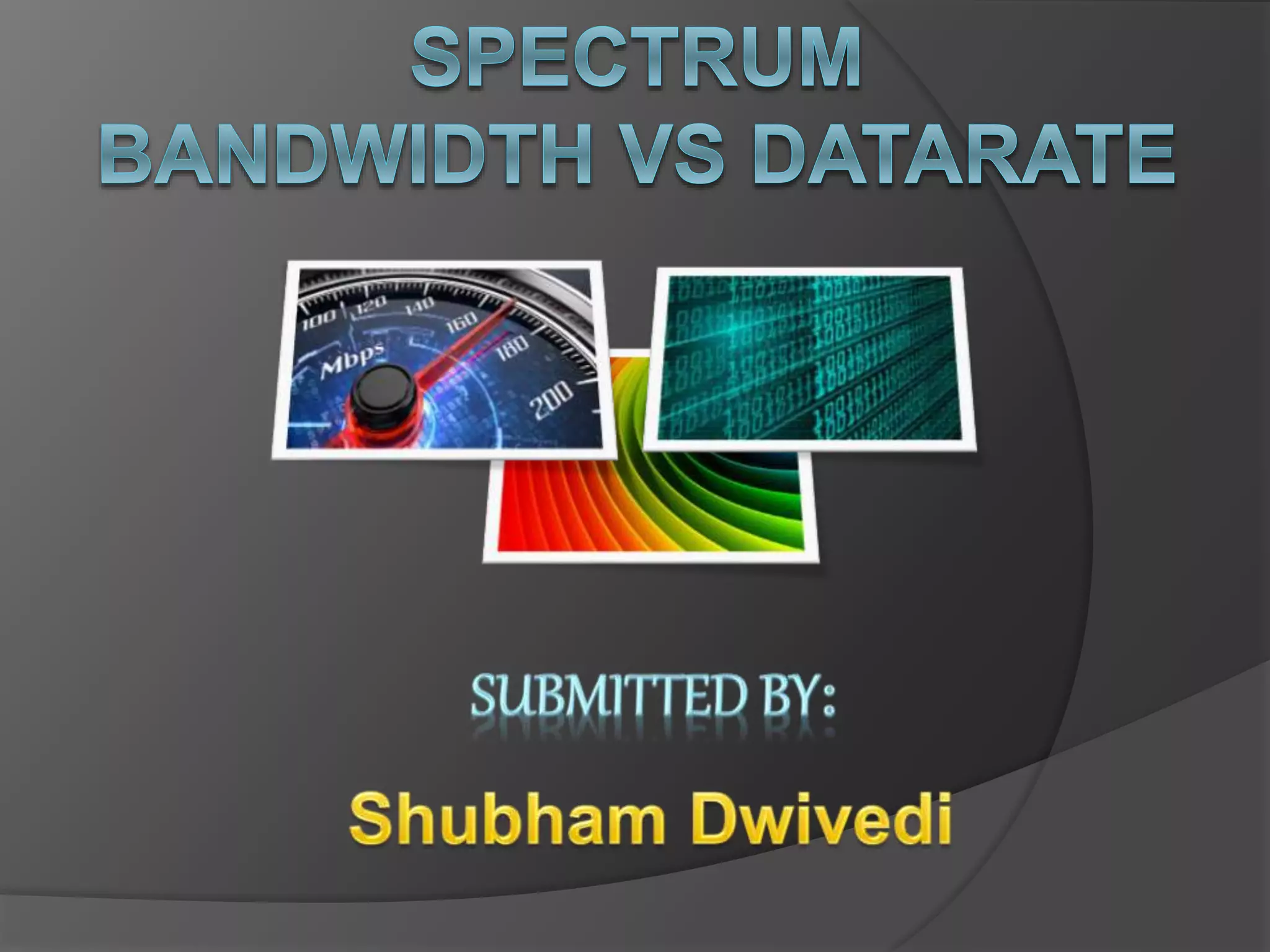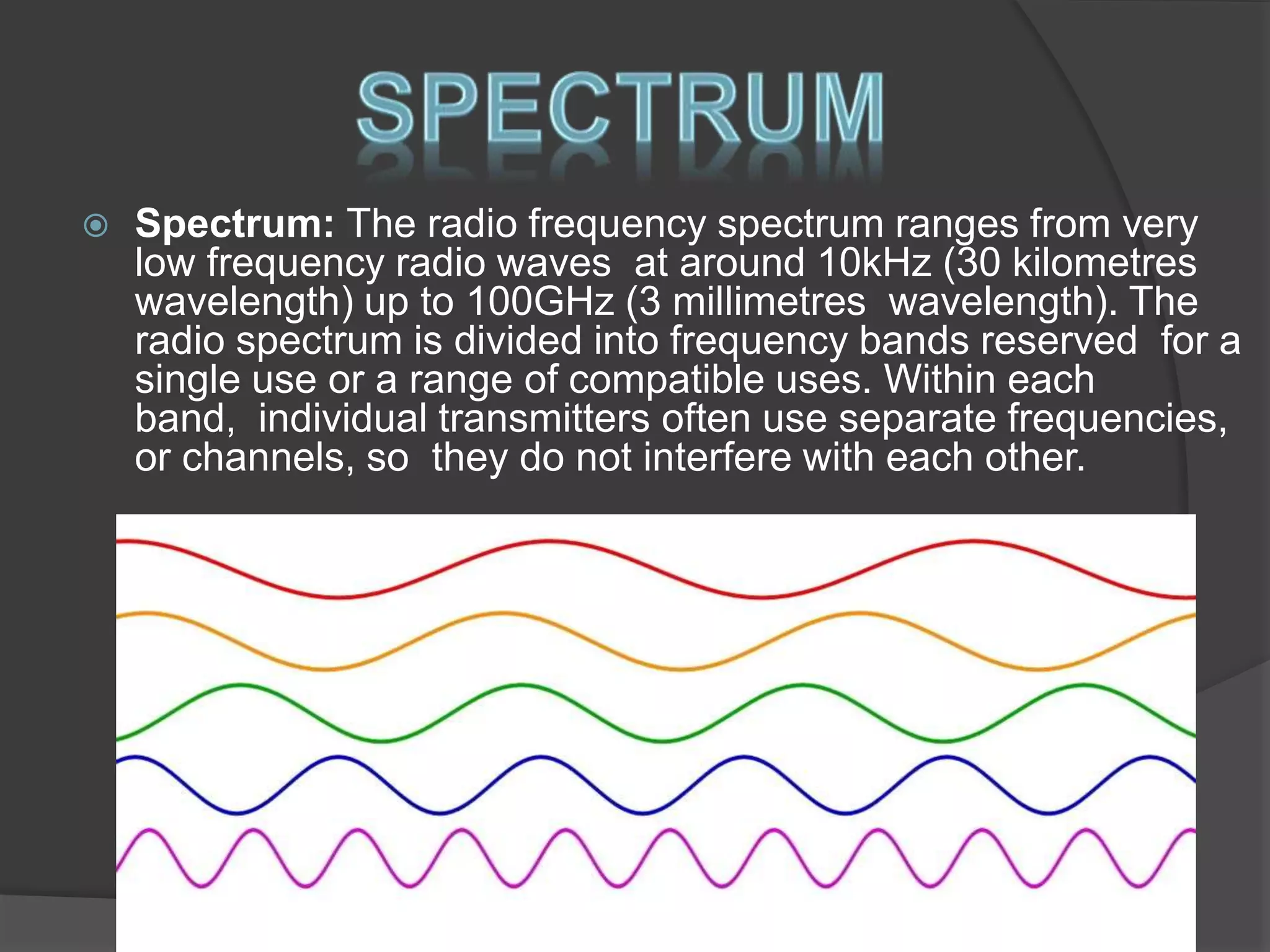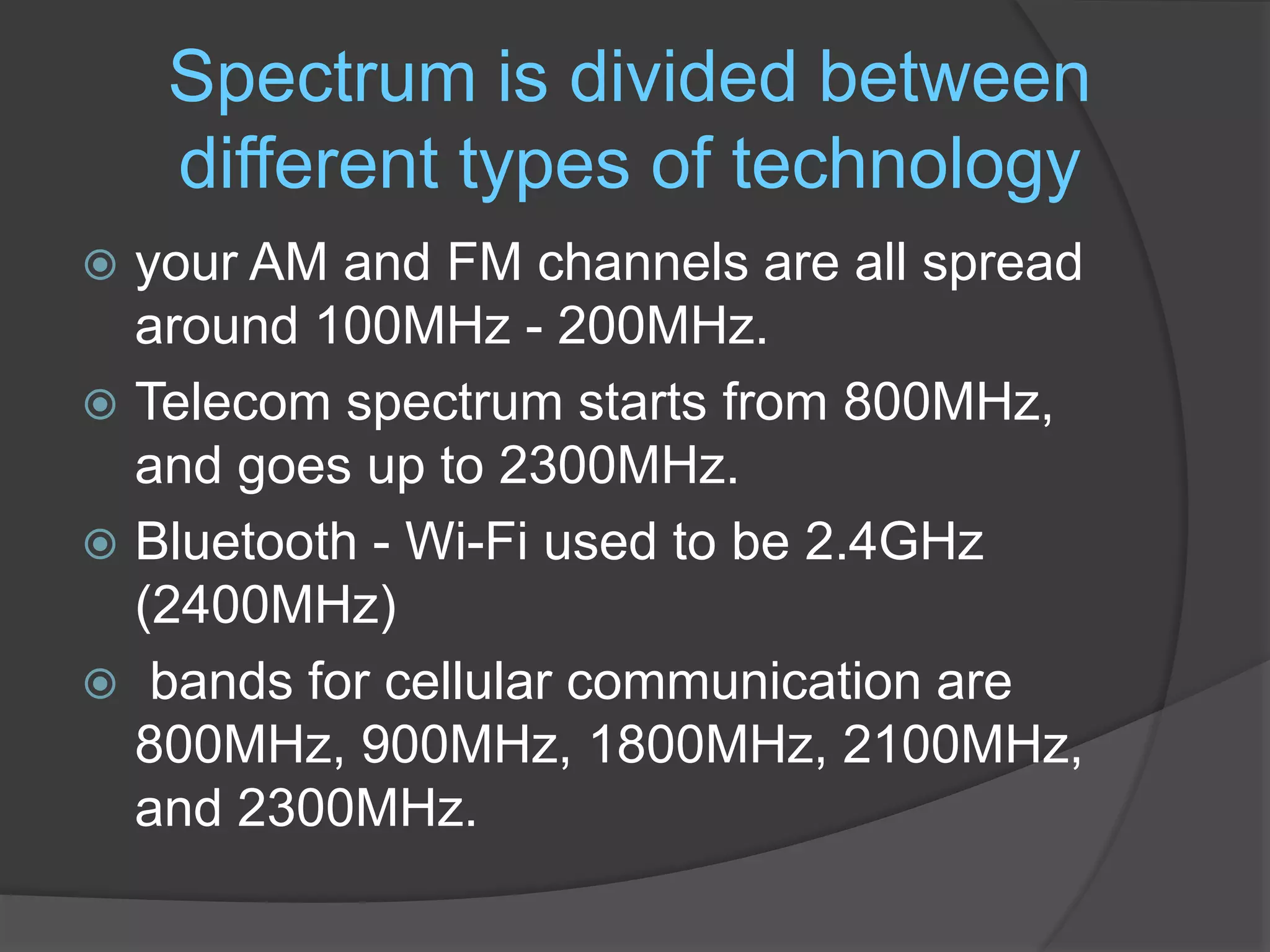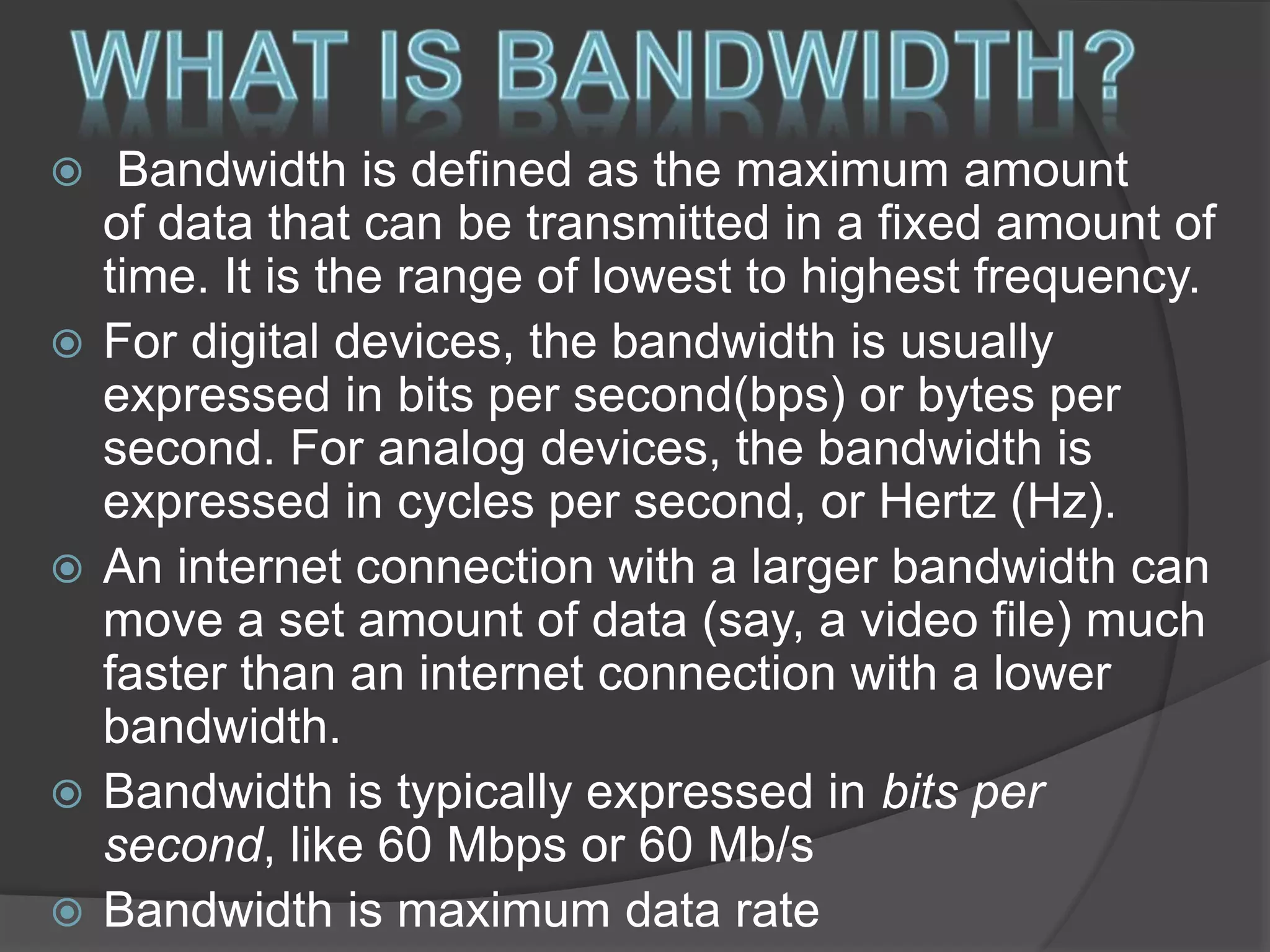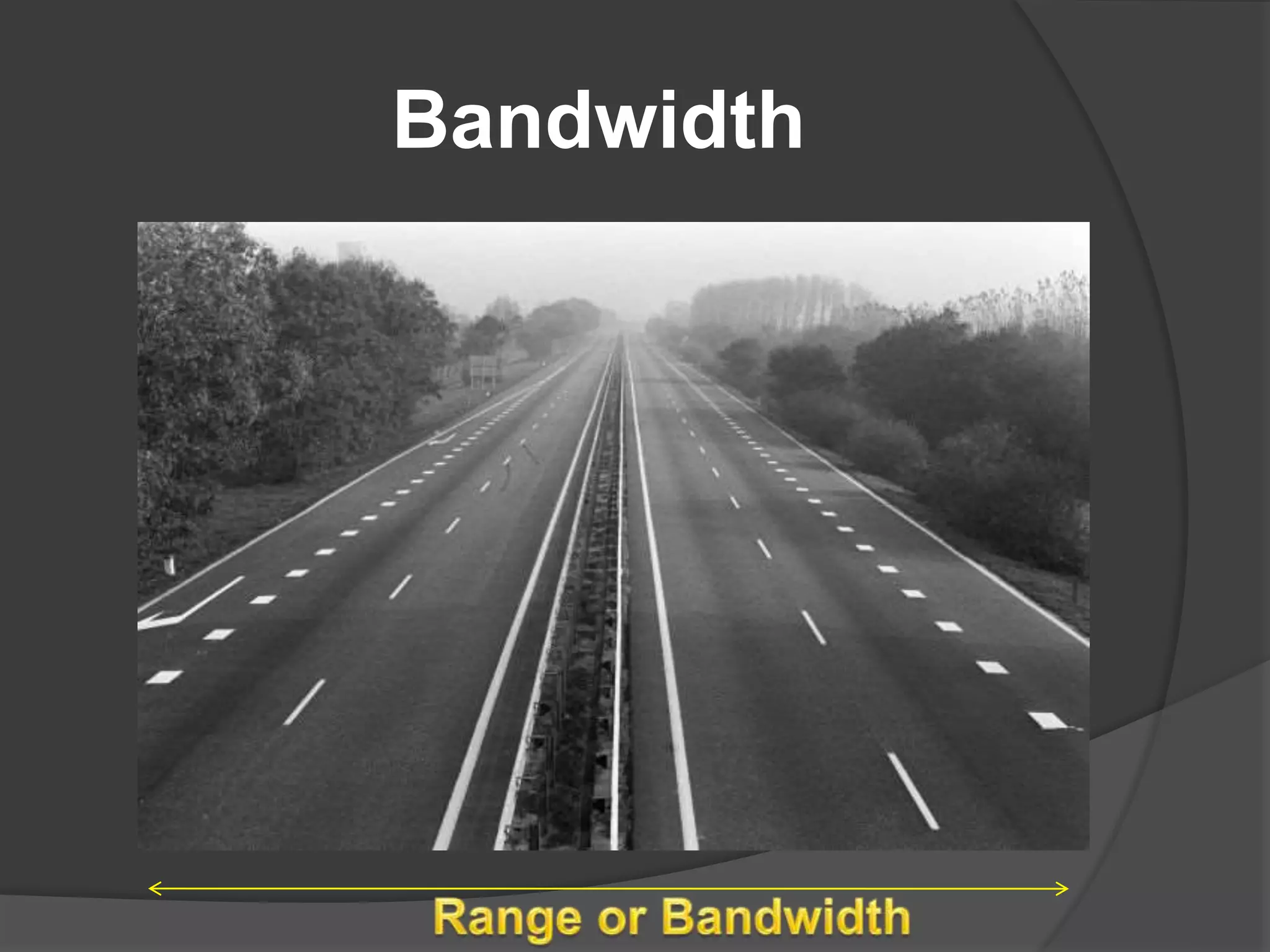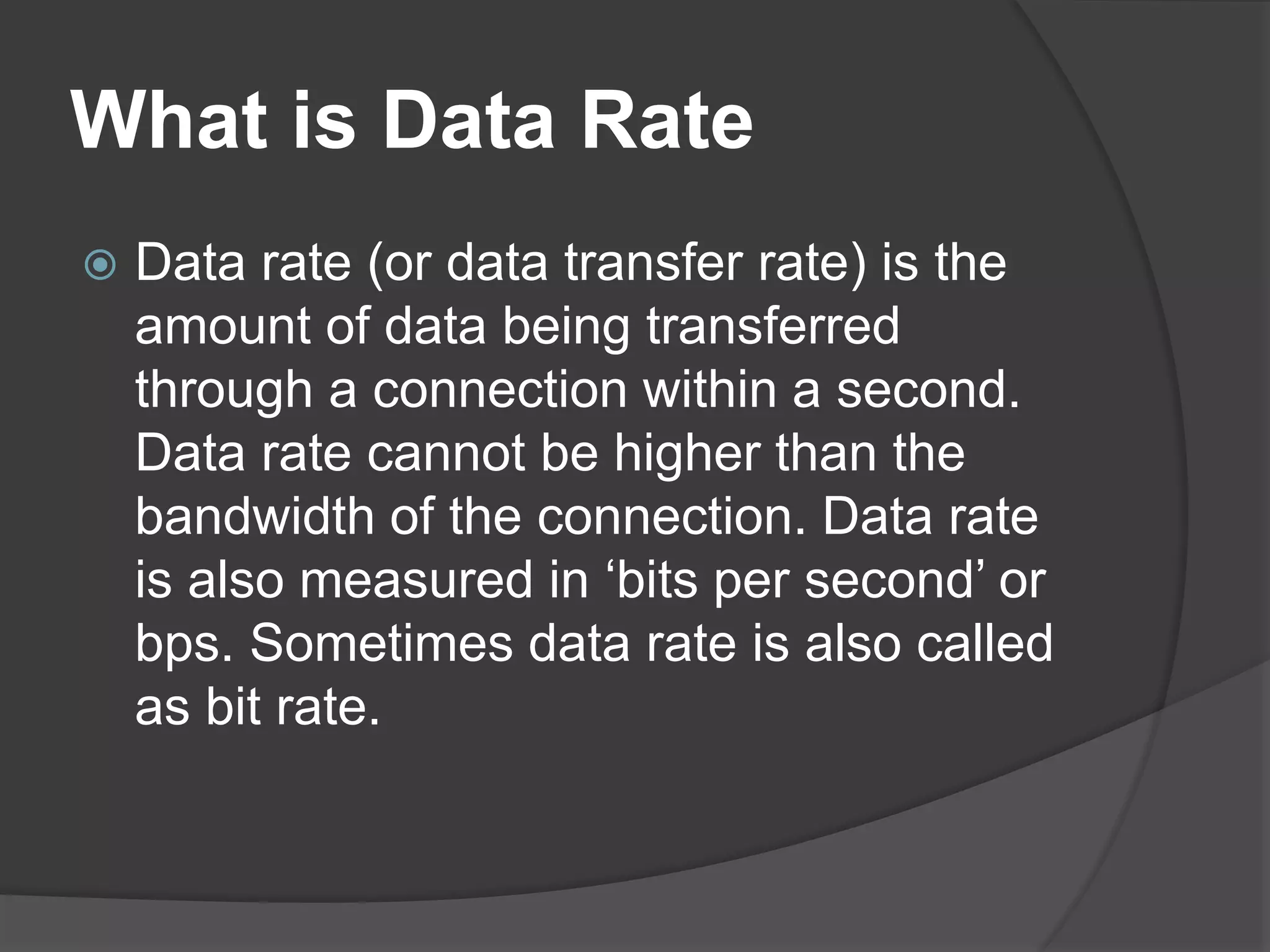The document discusses the radio frequency spectrum, defining it as ranging from very low frequency waves at 10 kHz to 100 GHz, segmented into frequency bands for specific uses. It explains the concept of bandwidth as the maximum data transmission capability, expressed in bits or bytes per second, and distinguishes it from data rate, which is the amount of data transferred over time. The document also outlines various frequency bands associated with different technologies, including AM/FM, telecom, Bluetooth, Wi-Fi, and cellular communication.
